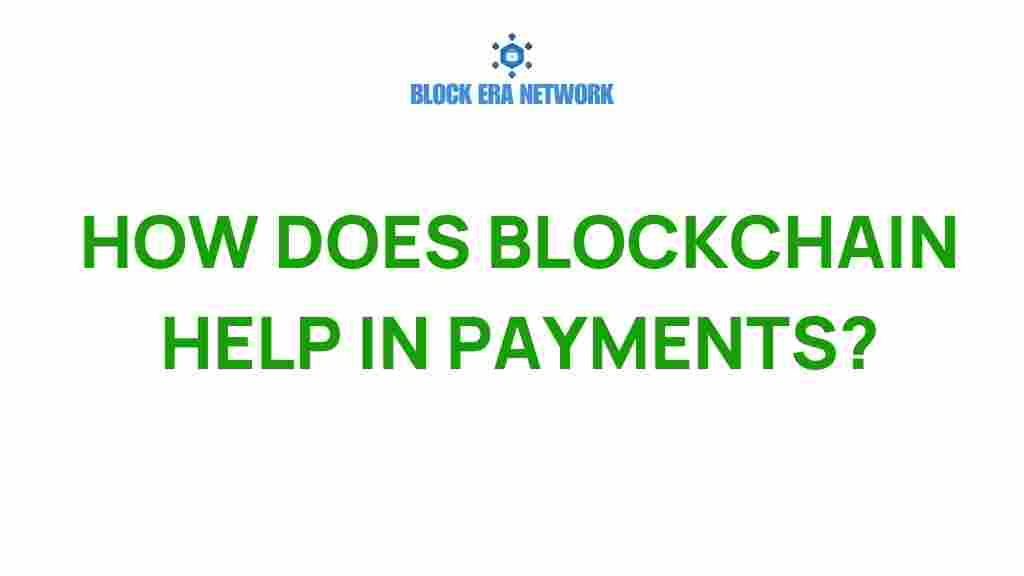Unveiling Blockchain: Revolutionizing Payments in the Digital Age
In recent years, the financial landscape has undergone a dramatic transformation, largely driven by the emergence of blockchain technology. This innovative solution is revolutionizing payments and reshaping the way we view transactions in the digital age. As a decentralized system, blockchain offers unmatched efficiency, transaction security, and a new era of digital currency. In this article, we will explore how blockchain is impacting payments, the advantages it brings, and how it fits into the broader spectrum of financial technology.
Understanding Blockchain Technology
Blockchain is a distributed ledger technology that allows for secure, transparent, and tamper-proof recording of transactions across multiple computers. Here’s a breakdown of its core components:
- Decentralization: Unlike traditional payment methods that rely on central authorities or intermediaries, blockchain operates on a peer-to-peer network.
- Transparency: Every transaction is recorded on the blockchain, making it visible to all network participants, ensuring transparency and accountability.
- Security: Blockchain employs advanced cryptographic techniques to secure transactions, making it nearly impossible to alter or hack.
- Efficiency: By eliminating intermediaries, blockchain can significantly speed up transaction processing times and reduce costs.
The Role of Cryptocurrency in Blockchain Payments
Cryptocurrency is often synonymous with blockchain technology. Digital currencies such as Bitcoin, Ethereum, and others utilize blockchain to facilitate secure transactions. Here’s how cryptocurrency enhances the payments landscape:
- Borderless Transactions: Cryptocurrencies enable cross-border payments without the need for currency conversion or high fees typically charged by banks.
- Lower Transaction Costs: Using cryptocurrencies can drastically reduce fees associated with traditional payment methods, making microtransactions feasible.
- Fast Settlement Times: Cryptocurrency transactions can be settled in minutes, unlike traditional banking systems that may take days.
How Blockchain is Transforming Payments
The integration of blockchain technology into payment systems is not just a trend; it’s a pivotal shift towards more efficient and secure transactions. Here’s a step-by-step look at how this transformation is occurring:
Step 1: Adoption of Decentralized Payment Systems
Many businesses are now adopting decentralized payment systems powered by blockchain. This allows them to accept cryptocurrency payments directly from customers, eliminating the need for payment processors.
Step 2: Enhanced Transaction Security
With blockchain, every transaction is encrypted and linked to the previous transaction, creating a secure chain of data. This ensures that transactions are not only secure but also verifiable.
Step 3: Improving Efficiency in Cross-Border Transactions
Blockchain technology streamlines cross-border transactions by removing intermediaries, reducing the time taken for funds to transfer internationally. This efficiency is key for global businesses.
Step 4: Innovative Financial Products
Financial technology companies are leveraging blockchain to create new products, including smart contracts, which automate payment processes based on pre-defined conditions.
Benefits of Blockchain in Payments
The advantages of implementing blockchain technology in payment systems are numerous. Here are some of the key benefits:
- Increased Security: Blockchain’s cryptographic security features protect against fraud and unauthorized access.
- Cost-Effective: Reduced transaction fees and operational costs for businesses.
- Speed: Faster transaction processing compared to traditional banking methods.
- Accessibility: Anyone with internet access can participate, providing financial inclusion to unbanked populations.
Troubleshooting Common Issues with Blockchain Payments
While blockchain technology offers numerous benefits, users may encounter certain challenges. Here are some common issues and troubleshooting tips:
Issue 1: Transaction Delays
Sometimes, transactions may take longer than expected. This can be due to network congestion or insufficient transaction fees.
- Tip: Ensure you are setting an appropriate transaction fee based on current network conditions.
- Tip: Check the status of your transaction on a blockchain explorer to see where it stands.
Issue 2: Wallet Security Concerns
Users may worry about the security of their cryptocurrency wallets.
- Tip: Use hardware wallets for storing large amounts of cryptocurrency.
- Tip: Enable two-factor authentication for added security on digital wallets.
Issue 3: Regulatory Compliance
As blockchain and cryptocurrency are relatively new, regulatory requirements can be confusing.
- Tip: Stay informed about local regulations regarding cryptocurrency and ensure compliance.
- Tip: Consult with legal experts if necessary to navigate the complexities.
The Future of Blockchain and Payments
The future of blockchain in payments is bright, with continuous innovation and adoption driving its evolution. We can expect to see:
- Wider Acceptance: More businesses will accept cryptocurrencies as a legitimate payment method.
- Integration with Traditional Banking: Banks are likely to integrate blockchain solutions to enhance their services.
- Development of Stablecoins: Stablecoins will provide a bridge between traditional finance and the digital currency world, offering less volatility.
Conclusion
In conclusion, blockchain technology is not just a passing trend; it is a fundamental shift in how we approach payments in the digital age. With its focus on efficiency, transaction security, and decentralization, blockchain is paving the way for a new era of financial technology and innovation. As we move forward, embracing this technology will be crucial for businesses and consumers alike.
To learn more about blockchain and its applications, you can visit this resource. For further information on cryptocurrency, check out this article.
This article is in the category Blockchain Basics and created by Block Era Network Team
